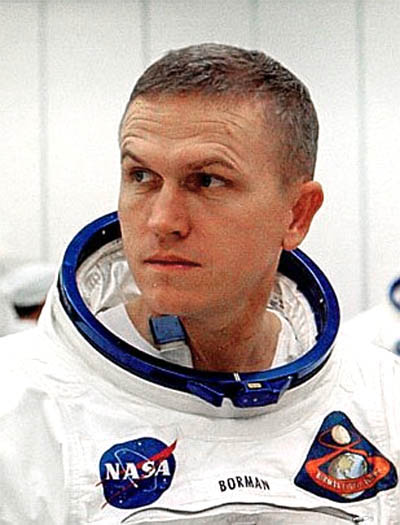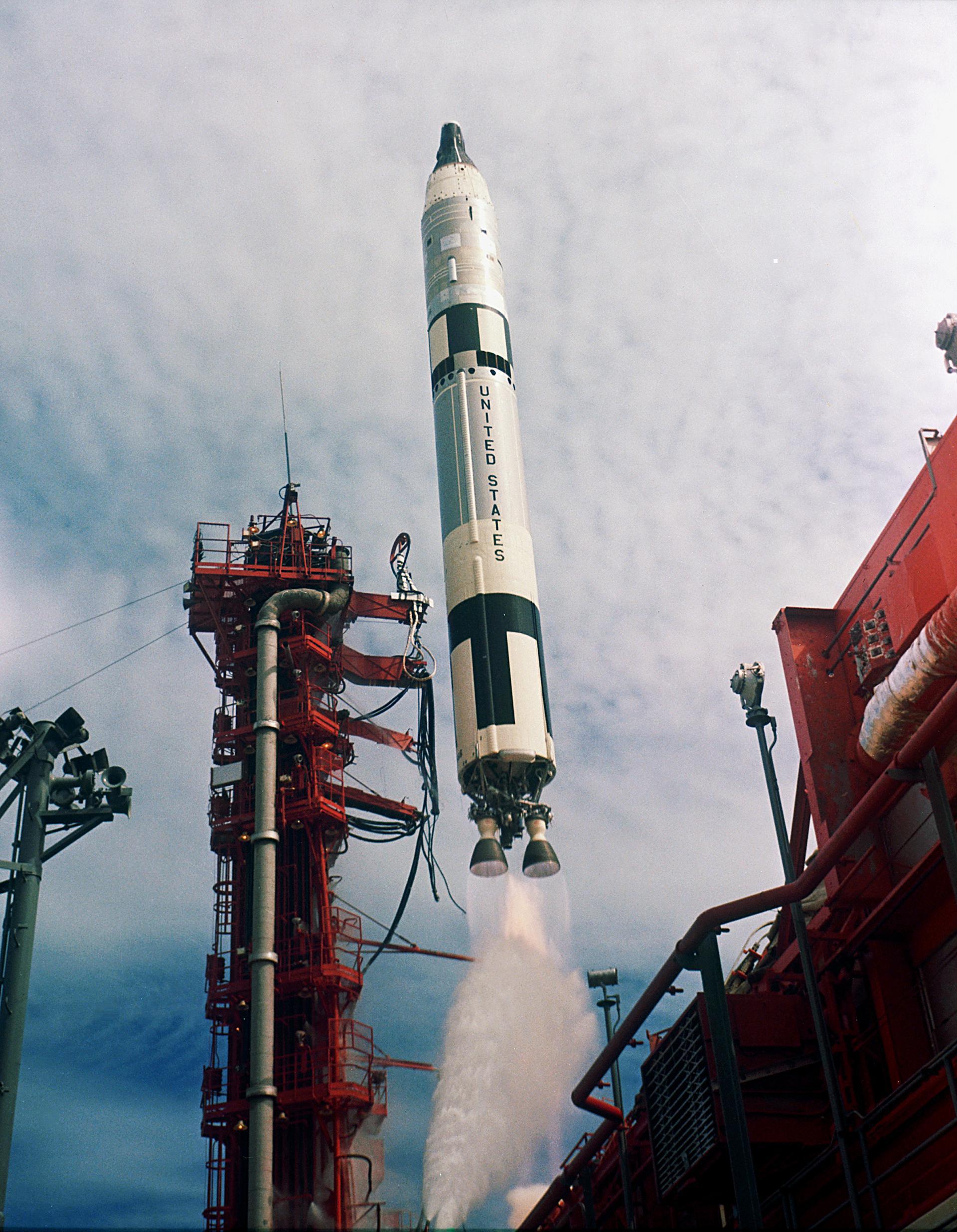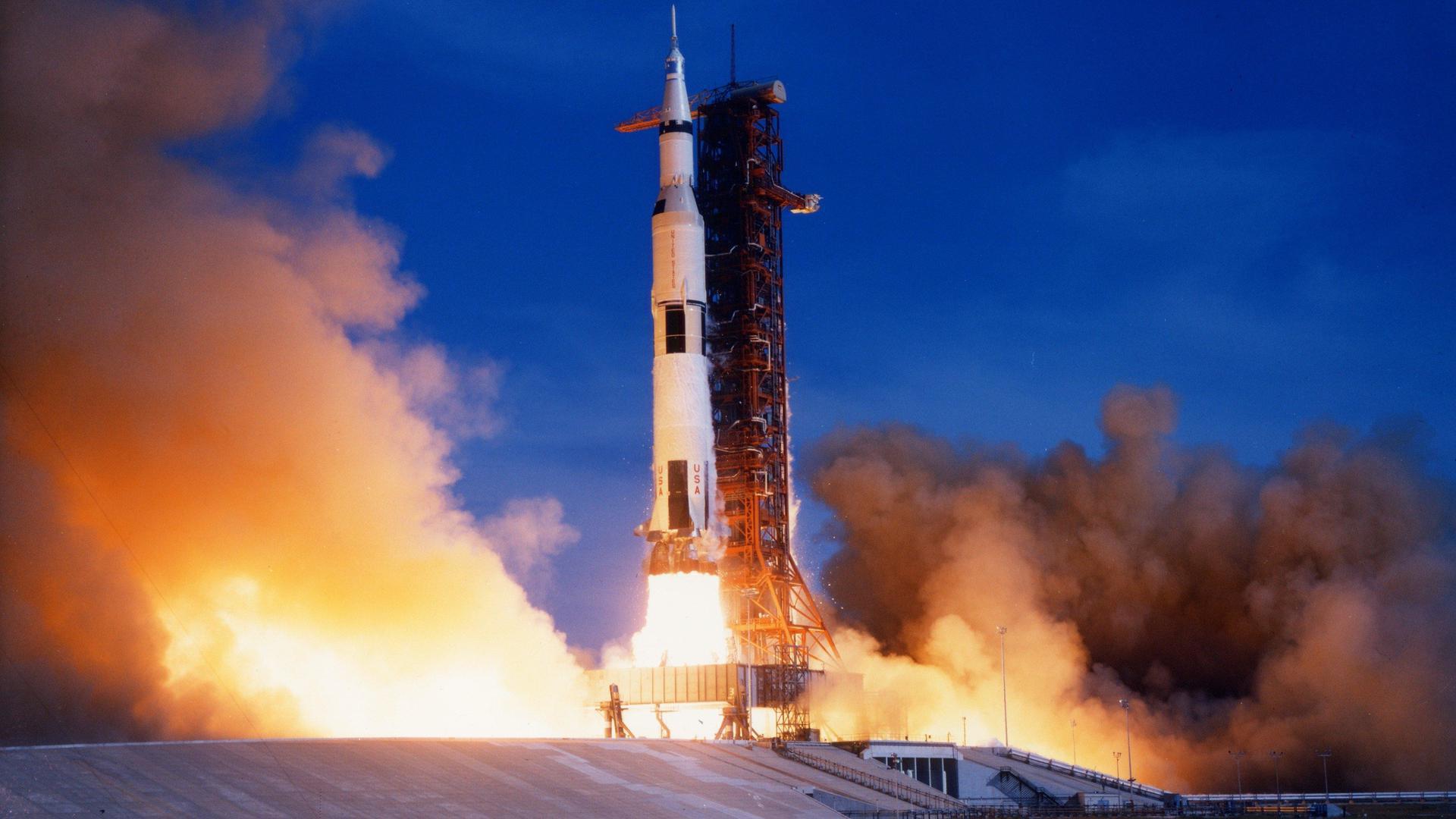Frank Borman
American - (NASA)
Deceased
Date of Birth: March 14, 1928
Date of Death: Nov. 7, 2023
Frank Frederick Borman II was a United States Air Force pilot, aeronautical engineer, test pilot, and NASA astronaut, best remembered as the Commander of Apollo 8, the first mission to fly around the Moon, making him, along with crew mates Jim Lovell and Bill Anders, the first of only 24 humans to do so. Before flying on Apollo, he set a fourteen-day spaceflight endurance record on Gemini 7, and also served on the NASA review board which investigated the Apollo 1 fire. After leaving NASA, he was the Chief Executive Officer (CEO) of Eastern Air Lines from 1975 to 1986. Borman is a recipient of the Congressional Space Medal of Honor.
Titan II GLV | Gemini VII
National Aeronautics and Space Administration | United States of AmericaCape Canaveral SFS, FL, USA
Dec. 4, 1965, 7:30 p.m.
Status: Success
Mission:
Gemini 7 was the fourth crewed mission of the NASA's Project Gemini. The mission was commanded by Command Pilor Frank F. Borman, II and Pilot James A. Lovell, Jr. The crew spent nearly 14 days in space, and their spacecraft was the passive target for the first crewed space rendezvous performed by Gemini 6A. The mission began on December 4, 1965, 19:30:03 UTC and ended on December 18, 1965, 14:05:04 UTC.
Low Earth OrbitSaturn V | Apollo 8
National Aeronautics and Space Administration | United States of AmericaKennedy Space Center, FL, USA
Dec. 21, 1968, 12:51 p.m.
Status: Success
Mission:
Apollo 8 was the first flight of the mighty Saturn V launch vehicle key to human exploration of the moon. The three-astronaut crew — Commander Frank Borman, Command Module Pilot James Lovell, and Lunar Module Pilot William Anders. This Mission was the first manned spacecraft to orbit the moon.
Low Earth OrbitThe National Aeronautics and Space Administration is an independent agency of the executive branch of the United States federal government responsible for the civilian space program, as well as aeronautics and aerospace research. NASA have many launch facilities but most are inactive. The most commonly used pad will be LC-39B at Kennedy Space Center in Florida.
Electron
Raise and Shine (RAISE-4)
Rocket Lab Launch Complex 1B - Rocket Lab Launch Complex 1, Mahia Peninsula, New ZealandRAISE-4 (RApid Innovative payload demonstration Satellite-4) is a Japan Aerospace Exploration Agency (JAXA) satellite for on-orbit demonstrations of …
Kuaizhou 11
DEAR-5
Launch Area 95A - Jiuquan Satellite Launch Center, People's Republic of ChinaDEAR-5 is a commercial in-orbit payload and micro-gravity experiments hosting spacecraft developed by Chinese commercial company AZSPACE for various …
Long March 12
SatNet LEO Group 16
Commercial LC-2 - Wenchang Space Launch Site, People's Republic of ChinaA batch of Low Earth Orbit communication satellites for the Chinese state owned SatNet constellation operated by the China Satellite Network Group. …
Falcon 9
Starlink Group 6-90
Space Launch Complex 40 - Cape Canaveral SFS, FL, USAA batch of 29 satellites for the Starlink mega-constellation - SpaceX's project for space-based Internet communication system.
Falcon 9
Starlink Group 15-11
Space Launch Complex 4E - Vandenberg SFB, CA, USAA batch of 27 satellites for the Starlink mega-constellation - SpaceX's project for space-based Internet communication system.




